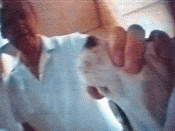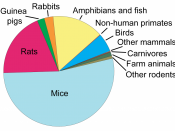Stroll down the health and beauty aisles of your local grocery store and you are likely to see a plethora of products you use on a daily basis. From shampoos to hair sprays and styling gels, concealers to nail polish removers, these are all products that aid us when it comes to our outer beauty. When deciding upon which shampoo to purchase, what goes into your decision making process? Is it the scent of the shampoo? How well the product cleans your hair and how it feels afterwards? Or do you even take into consideration whether it would irritate your scalp? What many do not take into consideration, is whether or not the product has been tested on animals. Envisioning a laboratory in which rabbits are bleeding as a result of poisonous chemicals being injected into their skin is not a pleasant thing to think about when buying health and beauty products, but it's a reality.
Animal experimentation, also known as vivisection in the animal rights community, has become an accepted practice of cosmetic manufacturers across the globe and has stirred many ethical debates. These debates cause us to rethink the question: "Should animals continue to be used for scientific or commercial testing?"
To animal activists, the answer is clear: absolutely not, animal testing is cruel and inhumane. According to the People for the Ethical Treatment of Animals (PETA), millions of cats, dogs, mice, primates, rats, rabbits, and other animals are locked away in laboratories across the country for the sole purpose of experimentation. These creatures live out the rest of their lives locked away in cages, which are stacked one on top of another in a plain cold room. Imagine spending the remainder of your life locked behind bars in a jail cell or confined to a hospital...


